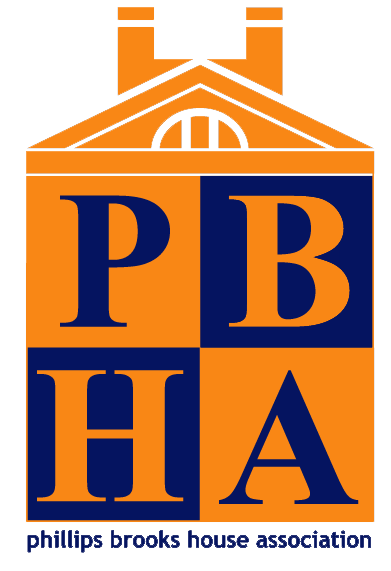A Love Letter to the Phillips Brooks House
By Farah Afify ‘22 and Ria Modak ‘22As PBHA Officers and campus organizers, the physical space of PBHA has always held a special place in our hearts. We have spent countless hours in the PBHA building, strategizing campaigns, fueling ourselves with snacks from the basement, and reveling in the good company of fellow organizers and activists from the Boston/Cambridge community. One of the more recent memorable moments we had in the building was last year, as sophomores, when we joined the Harvard Ethnic Studies Coalition (HESC) in December to organize against the tenure denial of esteemed Professor Lorgia Garcia-Pena, affectionately known as Profe. In the grand Parlor Room of the building, undergraduate and graduate students of color gathered together to discuss the strategies that we would take to support Profe and, in a similar vein, establish an ethnic studies department. While Farah was organizing with HESC in the Parlor Room, Ria spent most of their time in the PBHA basement during the December 2019 Harvard Graduate Students Union (HGSU) strike, planning picket lines and other labor actions, calling administrators to demand a fair contract, and subsisting on stale coffee and donuts brought in by supporters and allies. From HESC to HGSU and beyond, the PBHA building has long remained a space for radical organizing, pedagogy, and growth. Throughout PBHA’s history, service, education, and action have been intertwined in the minds and actions of student leaders, staff, and community members alike. PBHA encourages us all to think critically about the theory of change we must use to make a difference in our community. To that end, in the 1970s, Phillips Brooks House offered three social justice-oriented courses that were open to all undergraduates: Social Sciences 171, a course that combined educational theory with actual teaching in the Cambridge school system, a Quincy House seminar on Cambridge, and a course at the Harvard Graduate School of Education on tutoring methodology that includes teaching reading in Boston prisons. In addition, the PBHA building was home to a number of committees and organizations that reflected the radical currents of the times, including the Environmental Action Committee and the Committee on Women’s Issues. In fact, the opening of Harvard’s very first Women’s Center was on the second floor of the PBHA building. PBHA’s commitment to service and education has continued into our own century. In the 2000s, PBHA students spearheaded the Education for Social Action effort which brought in community leaders to teach about issues in Boston and Cambridge neighborhoods. For the past several years, student-leaders have taken up this call to action by putting together an annual six-week Advocacy and Organizing training, as well as many other trainings with local community organizers around key issues like CORI reform and youth jobs. Like the HESC students who walked in and out of the PBHA building with posters and bullhorns in December 2019, Black student activists had already filled the halls of PBHA with dreams of building a department that reflected their own lived experiences decades earlier. In fact, when the Department of African and African-American Studies was first founded after an intense period of student activism, it was housed first on PBHA’s third floor. In addition to housing an office for Black faculty and administrators, the third floor of the building was used as the Afro-American Cultural Center (AACC). Indeed, while students of color most recently use the building as a sort of informal multicultural center, little did they know that it had already served to celebrate Black culture on campus decades earlier. While PBHA housed offices and spaces for Black students, it also did much more. For instance, hoping to mobilize PBHA’s resources further, Black students at PBHA founded the “PBHA-Afro” program, which was a partnership between them and the Association of African and Afro-American Students that hoped to teach and celebrate Black culture to and with Black youth in Cambridge. Another PBHA program, “Project Tanganyika,” was so successful that from its efforts emerged the first ever course for Swahili at Harvard.In addition to the pedagogical and theoretical interventions promoted by the AACC, PBHA courses, the Women’s Center, and the Department of African and African-American Studies, the PBHA building was the site of radical campus organizing. In 2001, students used the space and resources of the building to plan a daring occupation of Massachusetts Hall to support campus workers’ demands for a living wage. Students and workers alike used the building to organize and support the Harvard University Dining Services (HUDS) strike of 2016, mobilizing thousands of students and community members in support of HUDS workers from the Parlor Room. Campus labor and community organizers continued to hold organizing meetings regularly before the outbreak of COVID-19 in the building. These stories, found in the archives of The Crimson and abandoned boxes in PBHA’s basement, are just the first of many more that center PBHA as not just a physical space for activism by students of color but also as an organization that was deeply committed to justice -- and continues to be. Farah and Ria -- as well as countless other PBHA students and community members -- are excited for the moment when we can return to our home once again.
